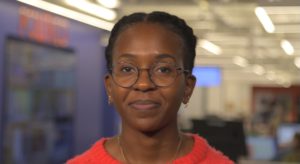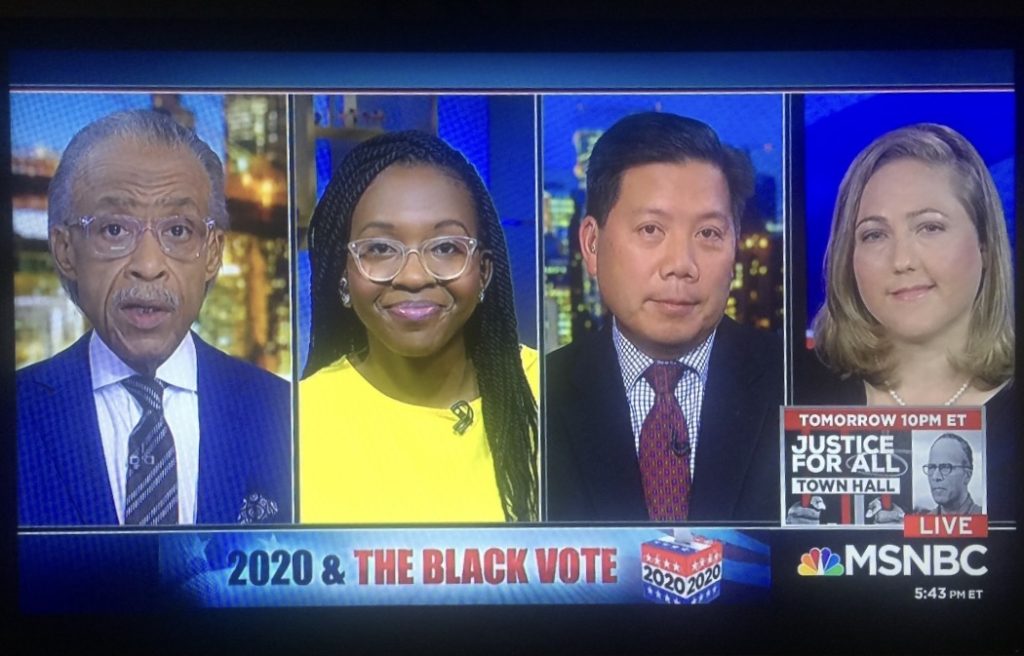POLITICO reporter Maya King addresses changes in newsrooms and ballot boxes after summer of protests
By Abby Bressette, Catherine Caradine, Solange Jain
As a reporter for POLITICO covering the intersection of race and politics since 2019, Maya King has seen it all — tense election cycles, the spread of COVID-19, the rise in popularity of movements to end systemic racism and election lies that fueled the deadly riot at the Capitol.
As America changed this last year in the face of the Black Lives Matter and the Stop Asian Hate movements, the news media faced its own reckoning as it covered historical voter turnout in minority demographics.

King, a seasoned journalist hailing from NPR, USA Today, and the Democracy Fund, watched this shift firsthand. At the start of her career, King covered minority voters’ views on the 2020 elections. “We were really data-based at that point,” she said. “What I noticed was a methodical approach to covering race.”
King’s comment that reporting methods have changed after last summer is highlighted by Ta-Nehisi Coate’s Vanity Fair interview with Breonna Taylor’s mother giving the BLM movement a more human-based perspective.
As COVID-19 cases climbed and protests against police brutality broke out across the country, King said she and numerous other journalists realized they had to make changes to their reporting.
“We had to step it up and gain an understanding of these groups outside of just their voting behaviors and the ways they may be systematically kept from fully engaging in the political system,” King said. “We had to cover this outside of just how people are feeling in a single moment and be a little bit more thoughtful and comprehensive in our coverage of communities of color.”
She also observed an increase in the number of journalists of color being hired by newsrooms and said these journalists began pushing for changes in the way demographics were analyzed during the election cycles. “[Journalists of color] had long been pushing for these changes and asking their leaders to evolve, and [those leaders] finally did when they realized what a big story [systemic racism] was.”
What started as reporting on the racial disparities within COVID-19 testing and hospitalization quickly turned to reporting on politicians, activists, and protesters as the summer 2020 protests gained popularity.
In October 2020, King visited Georgia, a state that would be crucial in the presidential and congressional election for the Democrats, to cover long lines at polling stations. “What I noticed was a lot of enthusiasm from Black voters who had overcome some of those changes that they thought were going to limit their ability to vote,” King said.
Americans of all demographics turned out to vote in the last election cycle. According to Pew Research Center, nearly two-thirds of eligible U.S. voters cast ballots for president in 2020. This was the highest voter turnout of the 21st century, according to the U.S. Census Bureau.
The media’s influence is also on the rise. A study by Pew Research Center found that in early 2020, 32% of Americans said the influence of news organizations on politics was increasing. By May 17, 2021, that number had jumped to 41%. According to Poverty Action Lab, the news media’s influence contributed to the increase in voter turnout in 2020 because it brought awareness to current events in politics. Further evolution to reach underrepresented communities in America could lead to similar turnout in future elections.
King didn’t just focus on Black voters in Georgia, but also Asian Americans, who turned out in record numbers in 2020. “That’s a group that’s not going anywhere; they turned out in masses and really made the difference between Democrats winning and losing.”

King went on to explain that Asian Americans could continue that power and momentum through the 2022 mid-terms and 2024 race.
A Pew Research Center poll found that in 2008, Georgia’s population of registered voters was only 1% Asian. By 2020, the number of Asian voters had increased to 4%, adding 63,000 new Asian American voters last year.
When reflecting on voter turnout in 2020, King expressed hope for a similar outcome in the future. “I think that these communities all understand their power now and they’re not willing to let that go,” King said. “I think that people have more tools at their disposal now to engage politically, so they see an opportunity.”
“Whether or not this is something I think we’ll be able to tell […] if they turn out again,” King said.
